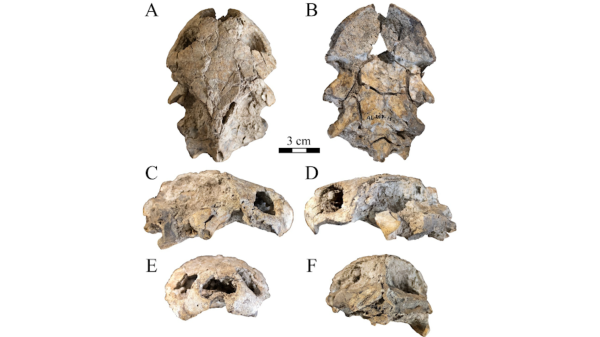Mapping out success for GIScience at ASU

Presenters at the SPARC launch event included (from left): Dan Brown, Daoqin Tong, Soe Myint, Stewart Fotheringham, Trisalyn Nelson, Wenwen Li, Michael Goodchild and Ross Maciejewski.
The growing discipline of geographical information sciences, or GIScience, is receiving renewed focus at Arizona State University’s School of Geographical Sciences and Urban Planning.
To meet the demands of student interest, as well as to grow research opportunities, the school has brought on a world-class leader in the field to join its already-esteemed faculty and has launched a new research center focused on spatial analysis.
Goodchild joins faculty
The nickname “Father of GIScience” is often exchanged in discussion of the impact Michael Goodchild has had in the fields of geographical information sciences and spatial analysis. Now, Goodchild has come to ASU's School of Geographical Sciences and Urban Planning to utilize his deep knowledge of the field to help propel the school and discipline in a time of growth for both.
Goodchild recently retired from his position as a research professor at the University of California, Santa Barbara (UCSB), and as the director of UCSB’s Center for Spatial Studies.
His path to becoming a pillar of geography was slightly unconventional as Goodchild began his academic career as a physics undergraduate student. Ultimately, his interest in caves drew him to study geography, and he found himself in a geography doctoral program at a time when computers were just starting to gain popularity. His background in physics gave him an advantage when it came to computers due to his knowledge of mathematics. But he wondered about the connection between the two disciplines.
“I started out in this field thinking, ‘Why on Earth would someone want to put a map in a computer?’” Goodchild recalled. “Because in the 1950s, computers were about calculations, and I didn't think you would need calculations with the map. However, by about the 1970s, it had become clear that there were a lot of things you would want to do with maps if you could put them into a computer. And so that was when it really took off, and it’s been taking off ever since.”
Michael Goodchild presents a history and look into the future of GIScience during the launch event for SPARC.
Maps had a long history of documenting the location of places, paths and hazards. This centuries-long history has changed in recent years, as the innovations of GIS (geographic information system) have revolutionized mapping for use in navigation. The use of GPS and time-dependent data now means travelers no longer have to refer to a map in their glovebox to guide their way, but can instead receive instantaneous information on not only the best route to take in general, but real-time updates on traffic and alternate routes.
“The traditional street map in your glove compartment didn't show anything that wasn't going to be true in the next week,” Goodchild said. “But these days, you have not only the map in the computer, but you also have real-time congestion data in the computer. That is a huge step forward.”
The world of GIS and its impact expands much farther than the use of maps for travel. It is the enormity of questions that can be answered through its use that has not only driven the interest and work of Goodchild, but also helped to create the interest in ASU launching the Spatial Analysis Research Center — also known as SPARC.
SPARCing an interest in spatial analysis
Housed within the School of Geographical Sciences and Urban Planning, SPARC is a GIScience and Earth-observing center poised with the goal to advance the science and technology of GIScience, as well as lead to transdisciplinary applications for spatial data solutions to address a variety of issues.
It is this capacity for transdisciplinary applications to problem solving, like SPARC is hoping to achieve, that excites Goodchild the most.
“There is the possibility to use GIS-type techniques to address other spaces, not geographic space,” Goodchild explained. “For instance, other planets, so that brings in astronomers. Or the space of the human brain, so that brings in neurosciences. You build these connections based on an interest in phenomenon that are framed in the space and time, which is geography, but is also a whole lot of other sciences as well.”
In line with this transdisciplinary approach, SPARC officially launched on Dec. 7 by inviting the campus community from all disciplines who step their toes into the world of spatial analysis to participate in a daylong event of presentations regarding current research in spatial analysis.
“We want to collaborate with other research groups across the campus through grant proposals and other activities,” said Stewart Fotheringham, director of SPARC and Foundation Professor with the School of Geographical Sciences and Urban Planning. “SPARC can play a very central role at ASU because our focus and expertise are in spatial data which are now found in many disciplines, not just geographical sciences.”
The possibilities for collaboration between SPARC and other disciplines are almost endless.
“SPARC provides knowledge and skills to build and use tools that help us address critical, timely and impactful societal problems in transportation efficiency, climate change, educational inequalities, health disparity, housing and land use, food security and other compelling challenges,” said Elizabeth Wentz, dean of social sciences for ASU’s College of Liberal Arts and Sciences.
“SPARC’s leadership and team has a vision for interdisciplinarity that provides deep and meaningful connections across ASU as well as nationally and internationally. SPARC will be central in improving ASU’s ranking and influence in the social sciences, physical sciences and in business.”
This far-reaching capability was evident during SPARC’s launch event as researchers took the stage to present their work. For instance, Trisalyn Nelson, director for the School of Geographical Sciences and Urban Planning and researcher with SPARC, presented on two of her research topics: bikes and bears. Her research spans from tracking bicycle use and safety concerns to also tracking the movement of bears in relation to construction areas, meaning everyone from city planners to environmentalists can benefit.
This mutually beneficial relationship drives the work of the SPARC researchers.
“We want ASU to know we are open for business,” Nelson said.
Learn more about SPARC, and the researchers involved, by visiting sparc.asu.edu.
More Science and technology

When facts aren’t enough
In the age of viral headlines and endless scrolling, misinformation travels faster than the truth. Even careful readers can be…

Scientists discover new turtle that lived alongside 'Lucy' species
Shell pieces and a rare skull of a 3-million-year-old freshwater turtle are providing scientists at Arizona State University with…

ASU named one of the world’s top universities for interdisciplinary science
Arizona State University has an ambitious goal: to become the world’s leading global center for interdisciplinary research,…













